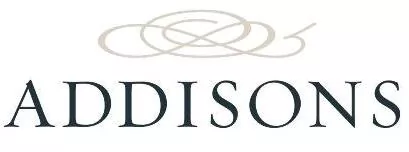Shareholders often appoint the company's chairperson as their proxy to vote on their behalf, especially at AGMs. They can either specify how the chairperson must vote by ticking the "for" or "against" boxes next to each resolution on the proxy form (a directed proxy), or leave the boxes blank and allow the chairperson to vote according to his or her own intentions (an undirected proxy).
On 27 June 2011, the Corporations Amendment (Improving Accountability on Director and Executive Remuneration) Act 2011 (Cth) was given Royal Assent. Section 250R(4) of this Act, which is effective from 1 August 2011, technically prohibits a chairperson (being a member of the "key management personnel" (KMP) of a company) from voting an undirected proxy on a resolution to adopt a remuneration report if his or her remuneration details are included in that report. However, the Government proposes[1] to introduce amendments to this rule in the Spring Parliamentary sittings[2] to make it clear that a chairperson will be permitted to vote undirected proxies in relation to remuneration report, provided there is express authorisation to do so by the shareholder.
In the interim, for companies whose upcoming AGM will occur prior to the proposed change in the rule (especially those with a 30 June financial year-end), section 250R(4) in its current form will still be applicable. To help these companies comply with the law, ASIC released an information sheet[3] which examined a number of options they may choose to adopt.
Option 1: Stick with the current AGM process but provide that the chairperson will not vote any undirected proxies on the remuneration report resolution
ASIC encourages companies adopting this approach to inform their shareholders of the fact that, if they provide an undirected proxy, their votes will not be counted in respect of any vote taken in respect of the remuneration report resolution. This is intended to minimise the number of uncounted votes.
Option 2: Alter the proxy form so that even where a shareholder fails to tick a box, it does not have the effect of making that shareholder's vote "undirected"
One way to do this is to state clearly in both the applicable notice of meeting and the proxy form, that if the shareholder does not tick the relevant box, he or she will be taken to have directed the chairperson to vote according to the chairperson's clearly stated voting intention (which should also be disclosed in both the notice of meeting and the proxy form). However, ASIC warns that if a company wants to adopt this approach, it must make sure that it does not deny a shareholder the ability to give a directed proxy that may include a direction to cast that shareholder's vote against the chairperson's stated intention, or to refrain from voting on that resolution.
Option 3: Suggest to the shareholders that they consider nominating, for the purpose of the remuneration report resolution, a proxy who is not part of the company's KMP
Such person would be permitted to vote undirected proxies as he or she felt appropriate. However, in such a scenario, we would recommend that that proxy should also have stated in both the notice of general meeting and proxy form, how he or she intends to vote such undirected proxies in respect of the remuneration report resolution.
Option 4: Apply to ASIC to be relieved from the rule
ASIC has the power to make a declaration which has the effect of clarifying that a chairperson is able to vote undirected proxies on a specific remuneration report resolution. This relief will only be granted if ASIC is satisfied that doing so will not cause any "unfair prejudice" to the interests of the company's shareholders.
Such an application must include:
- information on the circumstances that give rise to the application for relief;
- information to explain why relief is necessary;
- the identity of the chairperson of the meeting;
- a description of any prejudice that may result from giving the relief and reasons why giving the relief will not constitute unfair prejudice to the interests of any shareholder;
- a copy of the draft proxy form that will be made available to shareholders; and
- a copy of the draft notice of meeting (which clearly describes how undirected proxies given to the chairperson will be cast and counted).
The relief will contain requirements that the company must meet. It should also be noted that if a company wants to seek relief, it has to do so before dispatching the relevant documents to its shareholders.
The assistance of Chuanchan Ma, Clerk, of Addisons in the preparation of this article is noted and greatly appreciated
[1] David Bradbury MP, Amendments to the Corporations Act 2001 (11 August 2011) Parliamentary Secretary to Treasurer < http://parlsec.treasurer.gov.au/displaydocs.aspx?doc=pressreleases/2011/034.htm&pageID=003&min=djb&Year=&DocType=0>
[2] From16 August 2011 to 24 November 2011
[3] Australian Securities & Investments Commission, Information Sheet 144: Annual general meetings: Voting on the remuneration report resolution (10 August 2011) < http://www.asic.gov.au/asic/asic.nsf/byheadline/Annual+general+meetings+Voting+on+the+remuneration+report+resolution?openDocument>
The content of this article is intended to provide a general guide to the subject matter. Specialist advice should be sought about your specific circumstances.

